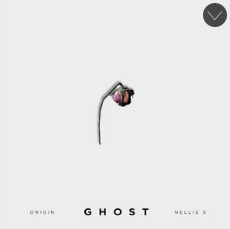In 2017, hip hop and RnB finally took over rock music as the most popular genre. It is impossible to imagine our culture sans rap and hip hop in 2022. Yet, the genre which became synonymous with gang violence in the 90s wasn’t always so widely accepted in Western Culture. For fairly obvious reasons.
The History of Rap Music
Most explanations of what is rap music history start with DJ Kool Herc, who made waves when he used two turntables to create loops to extend the instrumental section of a mix in the 70s.
When DJ Kool Herc’s mixed beats became a hit, he allowed Coke La Rock to compere his events, which led to him rapping over DJ Kool Herc’s beats, and so hip hop, as we commonly regard it, was born, but the history of rap goes even further back than that.
While some may believe that it all started in the Bronx, in reality, it began in West Africa centuries earlier. West Africa had Griots, AKA historians, that told rhythmic stories over a simple drumbeat; their stories would mostly revolve around their respective villages, and Caribbean folk music wasn’t worlds away from the rhythmic West African stories.
Rap music came to be defined as vocals that used spoken language, rhyme and rhythm while flowing to a beat. The flow, lyrical context and speed all became important signifiers of rap music. After the hype over Herc spread through the Bronx like wildfire, plenty of other artists stepped up to the plate to push the cultural shift even further.
Kurtis Blow was the first rap artist to be signed to Mercury Records in 1979, and during the following year, Sugar Hill Gang and The Fatback Band both entered the Billboard top 40.
During the 80s, party hip hop became a major part of the music industry. This was shortly before hip hop became regarded as a powerful tool for social change, a way to call for accountability and to share socially conscious intellect.
The golden era of hip hop dawned in the mid-80s; names that defined the era included Public Enemy, Rakim, Run D.M.C., and A Tribe Called Quest. Rap music became harder, faster, denser and better produced during the mid-80s. It also got infinitely grittier, thanks to the likes of West Coast Rappers, such as ICE-T and N.W.A., who were keen to share their controversial content to shine a light on the darkest corners of urban life.
In the 90s, the battle raged between West Coast and East Coast rap artists who fought it out for dominance in the charts and on the streets – it is unlikely that any two artists will ever come close to the rivalry between Biggy and Tupac.
Thankfully, the friction in the hip hop industry started to fade when the likes of Snoop Dogg and Jay Z came onto the scene in the 90s to help rap artists shed their bad collective reputation.
Female rap artists finally started to breakthrough in the 90s too. Yo-Yo, Queen Latifa and MC Lyte proved that women have as much a place in the genre – which is just as true today with icons such as Nikki Minaj and Cardi B reigning supreme on the rap charts.
Post-2000, rap music is as diverse as it is popular. Old school fans may not make much of new wave trap trends, but artists, such as Lip Peep and Lil Xan, deserve just as much of a place in rap history as any one of the 70s, 80s or 90s icons. Today, there are 22 subgenres of rap, including the marmite of rap, mumble rap, rap-rock, Crunk, drill, emo and horrorcore.
–
As important as it is to ask what is rap music history, it is just as crucial to keep your finger on the pulse when it comes to the future of hip hop and rap music. Take for example the stellar tracks that transpired as a result of the Black Lives Matter movement in 2020 and Spottie Wifi making history as the first-ever Cryptopunk rapper in 2021. Rap music blogs are the best way to stay engaged with the luminary up and coming artists that are bringing in the future of rap and hip hop.




No Comments